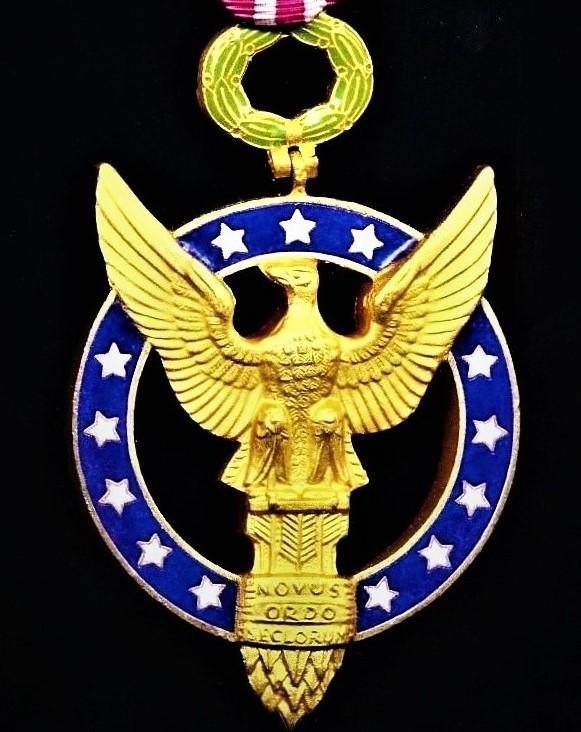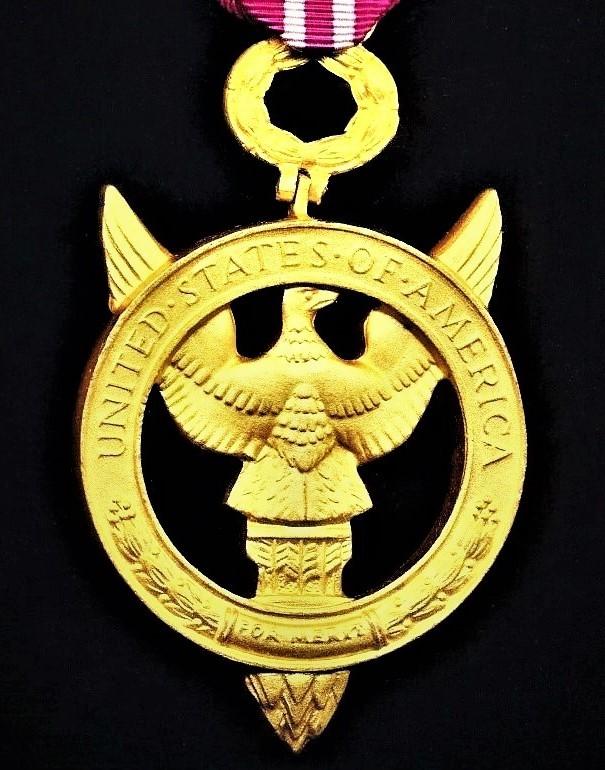United States: Presidential Medal for Merit (Instituted 1945). Gilt & enamel
Important: The medal only awarded 1942-1952
The silk corded riband fitted with a 12mm unmarked crimp-brooch issued circa 1945-1952. The brooch retaining the original long-hinged pin with intricate drop-lock & clasp fittings
The Medal for Merit was created by Public Law 77-671 and its awarding codified by Executive Order 9286 - Medal for Merit on December 24, 1942, later amended and restated by Executive Order 9857A of May 27, 1947. Created during World War II, and awarded to "civilians of the nation's prosecuting the war under the joint declaration of the United Nations and of other friendly foreign nations", the medal has not been awarded since 1952
The Presidential Medal for Merit is one of the highest civilian decorations of the United States. Awarded by the President of the United States to civilians for exceptionally meritorious conduct. At the time, it was the highest award available to civilians. Created during World War II, and awarded to civilians who contributed exceptional services to that war. The medal has not been awarded since 1952. Eligible to receive the medal are civilians of any nation who have rendered exceptional service since the proclamation of an emergency by the President on September 8, 1939. Foreigners who have assisted in the war efforts of the United Nations (as existing on July 20, 1942, which is not the present UN). Proposals are considered by the Medal for Merit Board, numbering three members appointed by the President, of whom one is appointed by the President Chairman of the Board. The medal cannot be awarded for any acts relating to the prosecution of World War II, after the cessation of hostilities (as proclaimed by Proclamation No. 2714 of December 31, 1946), and no proposal for an award for such services could be submitted after June 30, 1947
Civilians of foreign nations could receive the award for the performance of an exceptionally meritorious or courageous act or acts in furtherance of the war efforts of the Allies against the Axis Powers. The first person to receive this medal who was not an American citizen was Edgar Sengier, the director of the Belgian Union Miniere du Haut Katanga during World War II. Sengier was awarded the Medal for Merit on April 9, 1946. The second foreign civilian to receive the medal was the Canadian spymaster William Stephenson in November 1946. Stephenson had the code name "Intrepid" during World War II. Another recipient was Sir Robert Watson-Watt, a British pioneer of radar, who created a chain of radar stations around the UK which enabled advance information to be available to the Royal Air Force of incoming German aircraft and was instrumental in the winning of the 1940 Battle of Britain. He was sent to the US in 1941 to advise on air defense, after Japan's attack on Pearl Harbor. He was awarded the US Medal for Merit in 1946
A very attractive, rare & desirable item of United States insignia - and scarce on the market
Condition: GVF
Code: 20747







